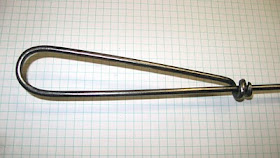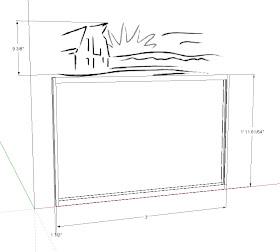

My local scrap yard is perhaps an anachronism. I have heard other blacksmith friends say their scrap yards don't permit wandering and picking because of liability concerns. I have enjoyed this privilege for years and even have an informal "wish list" which they pay attention to and they will lay aside things they know I want as they receive them.
From their perspective the profitable steel scrap is the dense items and flimsy things such as drums and tanks are a nuisance because they must be crushed or cut to compact the density for shipping. Those hollow items I can often pick up free. 30 gallon drums are my favorite and beer kegs are useful too.
In fact the first concrete base I made following the cone mandrel was a beer keg base for my first Peter Wright anvil. I decided how I wanted to attach the base to the feet of the anvil with bolts and incorporated that structure into the base as I filled it with concrete. This base worked nicely and I was encouraged to try it with other tools.
Now the asymmetric vise, small ring roller, and one post vise are mounted on concrete filled 30 gallon drums. A drum is about 18.25" in diameter and 27.5" tall and holds about 3.5 bags of Sakrete. So when the tools if mounted the whole piece will weigh in the neighborhood of 300 pounds.
It has recently occurred to me that it might be wise to incorporate a lifting hookup into the barrel when the concrete is poured. This would allow the chain hoist to lift from the base without pulling directly on the tool.
When I mounted the portable post vise I made sure it was the same height as the main one in the forge room so the two could be used in conjunction. This isn't a common occurrence but occasionally is handy when doing such things as symmetrical reverse twisting or keeping both ends of a bar oriented while doing something to the middle of it.
One final tip for the cost conscious person. When I go to the farm and ranch store where I buy most of my supplies, such as Sakrete, I ask if they have any damaged bags in the warehouse which they was to move. Once they had a pallet which had been bumped by a forklift and I was able to pick up my purchased bags and they threw in all the torn bags free.

















